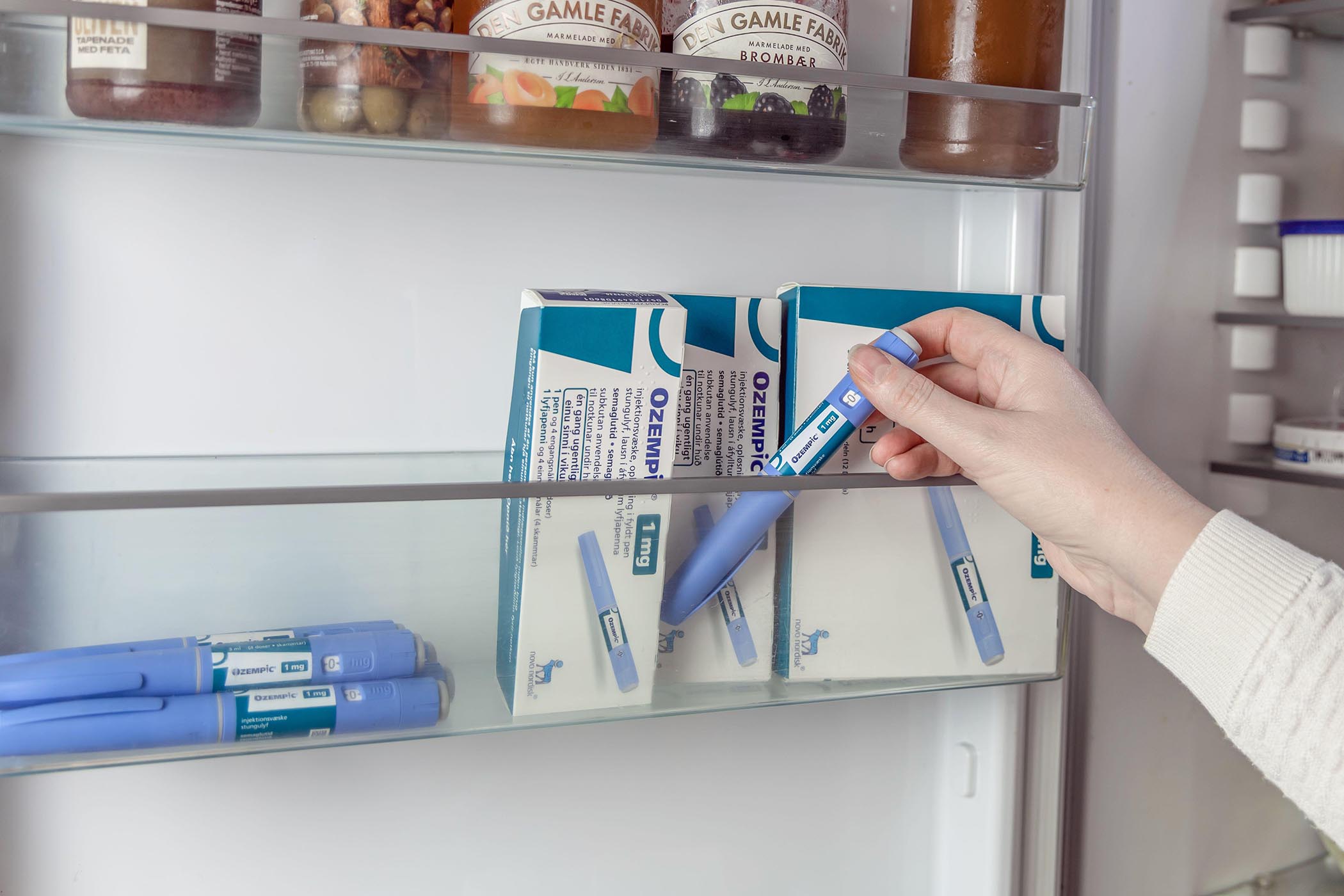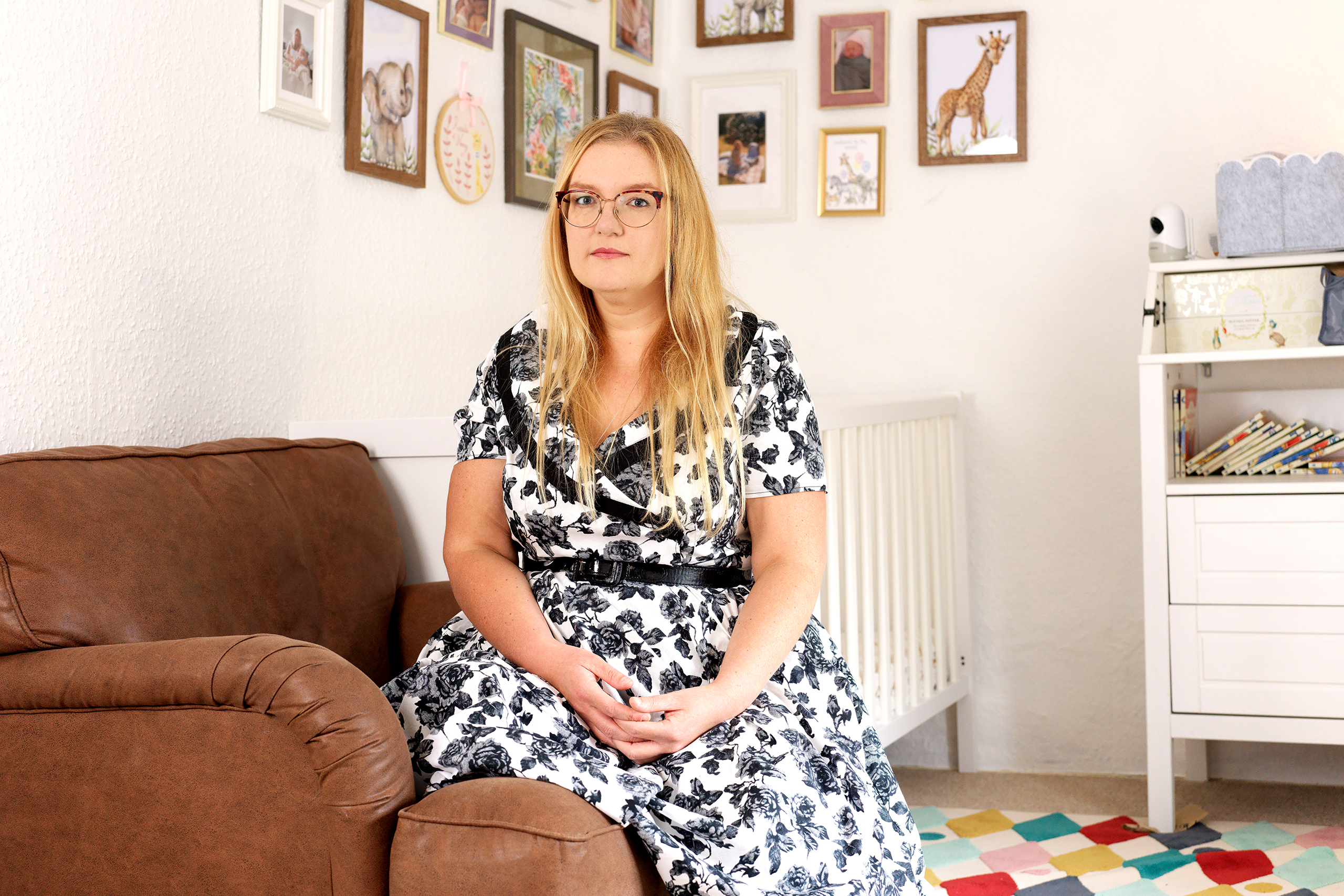
Parental use of GLP-1s is sending children with eating disorders mixed messages
It was the term that made it all click: almond mom. The phrase, which went viral in 2023, helped to pinpoint a specific but common experience shared by millennials online: growing up with pseudo-health-focused parents who either purposefully or tacitly promoted the diet fads of the 90s and 00s, all neatly summarised by the common suggestion to “just have some almonds” when hungry.
The term captured the trickle-down effect of being raised by parents whose relationship with food developed in the era of Atkins and Special K diets. Now, gen Z and gen Alpha are beginning to encounter the almond mom’s next form: the Ozempic mom, the growing number of mothers preaching body positivity while taking glucagon-like peptide-1s (GLP-1s) for non-medical reasons – or even sourcing them for their children.
It’s hard to overstate the rapid rise of GLP-1s, which are now taken by an estimated 1.5 million people in Britain. Over the past two years they have become not just a diet aid but a symbol of our confused cultural discussion of body image. Is Ozempic the most damaging agent in the recent repopularisation of thinness? Or is it empowering, allowing users to take control and shut out “food noise”? All within a popular culture struggling to cling on to the body positivity movement of the 2010s.
Children and young people encounter a pinball machine of competing messages. Nowhere is the impact of this more evident than in online eating disorder forums for young people.
“She’s telling me to nourish my body and that it’s beautiful and not fat, while she injects herself with Ozempic so she doesn’t have to have my body any more,” one user wrote about her mother on an eating disorder forum on Reddit. “She doesn’t realise how she’s set me up to fail in recovery.”
Related articles:
Eating disorders are often competitive, and many of these posts say that feeling is triggered when they come across their mothers’ GLP-1s. “She ordered it a couple of weeks ago and is now taking it,” reads one post titled “Mum is on Ozempic, how do I deal with this?” from earlier this year. “She also keeps her injections in the fridge so I see them every time I open the fridge.” This is a common refrain. “The fact her Ozempic just hangs out in the fridge?” reads another. “I’m considering just giving up on recovery.. I feel jealous about how much weight she’s lost.”
Charities and treatment centres have started to notice the trend. “Weight-loss injections are often marketed as a ‘quick fix’, so it’s no surprise that young people are questioning why they need to stick to treatment plans, and this is something we have begun to observe in the support we deliver,” says David Magson, the CEO of First Steps ED, an eating disorder charity.
“Adolescents in treatment for eating disorders are particularly vulnerable to mixed messages about weight and eating, and when they see parents using weight-loss injections, it can understandably feel contradictory to the recovery work they’re being asked to do,” he says. “This can create a real tension in the path to recovery and it can reinforce the very thought patterns we’re trying to help them move away from.”
It’s not just those with eating disorders who are trying to navigate the impact of the normalisation of weight-loss injections, but young people and teenagers more generally.
In the UK and the US, certain GLP-1s (such as semaglutide, carrying the brand name Wegovy) are licensed for children with obesity aged 12-17, and clinical trials have begun to test their effectiveness on kids as young as six. Legally, they should only be prescribed by a doctor – and in only specific circumstances – but undercover reporting has shown that they can be purchased illegally on the black market. And some young people are finding them on offer at home.
In these online support forums, there are several posts from women and girls – many of whom self-report average weights for their age and height – asking for help to resist the pressure from their parents to take GLP-1s for non-medical reasons. “My mom texted her friends asking where I could get Ozempic”, reads one post on Reddit’s r/PlusSize forum from January. “I’m the happiest I’ve been in the last few years, but that doesn’t matter [to my mother] because I’m not ‘skinny’ any more.”
Others believe their parents are in the right. “My mom has been trying to help me,” reads one post from a girl claiming to be 15 years old, who says her mother has already put her on several other weight-loss regimes. “None of it works. I have no self-control. My mom wants me to try Ozempic next. Honestly I’m kind of wanting to try it… I’m desperate to finally not be fat.”
The message at the heart of both online trends suggests one cohort of villains: the mothers who bend to the pressures of diet culture and push its standards on to their children. But criticism of the “almond mom” trend rightly noted its misogynistic undertones, blaming mothers alone for perpetuating harmful body-image standards, rather than fathers, parents or society more widely. In fact, the term “almond mom” has become so popular that children will now film their clearly distressed mothers – uncomfortable at restaurants, struggling to finish a plate of food – and post them online, ultimately failing to see the ways in which these women are also victims of the same forces. “We know positive role models and accessible support are very important for young people, particularly when it comes to mental health [and] parents and carers are part of this,” says Rosie Weatherley, information content manager at the mental health charity Mind. “But we need to remember that parents have also been subject to the toxic narratives that have existed around body image for decades.”
We are still in the early stages of Ozempic’s popularity. It is only just tipping into the territory of its normalisation. Most people – not just parents, and not just mothers – are ill-equipped to handle the impact of its pervasiveness. But the growing cognitive dissonance in how society views GLP-1s – where their use is labelled as both neutral or feminist while it is also recognised as a key player in our era of glorified thinness – will only augment the mixed messages that children and young people are receiving. A failure to parse out which is which will yield costs far greater than mere cultural confusion.
Photograph by Natalia Varlei/Alamy





